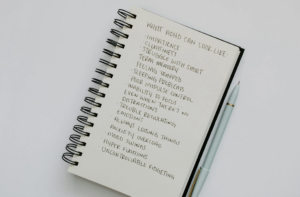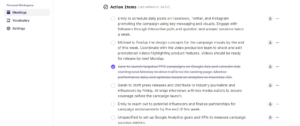Have you ever found yourself endlessly scrolling through options, only to end up making no decision at all? This frustrating phenomenon is known as choice paralysis.
Whether deciding on a simple dinner plan or a life-altering career move, being paralyzed by choice can hold you back significantly. In this article, we’ll break down the choice paralysis meaning, its root causes, how it impacts your life, and share actionable tips to help you overcome it.
What is Choice Paralysis?
Choice paralysis, also called decision paralysis or paralysis of will, occurs when the sheer volume of options makes it difficult to make a decision. The latter sometimes leads to complete inaction.
It’s the experience of feeling “stuck” because you’re overthinking and weighing each choice’s potential outcome.
Imagine you’re in a grocery store aisle faced with ten brands of the same gluten-free, organic yogurt. Instead of simply choosing one, you find yourself comparing ingredients, prices, and reviews—only to leave empty-handed or frustrated.

Do you even need the yogurt, at this point?
This tendency to hyper-analyze every option and fear making a wrong choice can become overwhelming, ultimately, causing a decision freeze.
Decision Paralysis vs Analysis Paralysis
While decision paralysis and analysis paralysis are often used interchangeably, there’s a subtle distinction.
Decision paralysis refers broadly to the inability to make any decision when options abound, often due to fear of making a wrong choice.
Analysis paralysis, however, focuses on the tendency to overanalyze and scrutinize each option to the point of inaction. Think of it as being paralyzed by choice because you can’t stop gathering information, evaluating, and re-evaluating each detail.
For example, someone might experience analysis paralysis while researching investment options, ultimately delaying any action. In contrast, decision paralysis might prevent someone from choosing a restaurant, even when the options are fewer but equally appealing.
Common Symptoms of Choice Paralysis
It’s easy to dismiss indecision as a “simple quirk”, but choice paralysis comes with its recognizable red flags:
- Spending an unusually long time making minor decisions,
- Constantly analyzing each possible outcome,
- Worrying about the consequences of choosing “wrong,”
- Finding it challenging to consider options effectively and set priorities,
- Putting off decisions indefinitely or asking others to decide on your behalf.
These symptoms can appear in different situations, from work-related decisions to everyday personal choices. Identifying these signs is the first step toward addressing them.
Now, let’s discuss the causes of choice paralysis in more detail in the next paragraph.
Causes of Choice Paralysis: Why Do We Get Paralyzed by Choice?
When it comes to choice paralysis, several base factors contribute to the overwhelming feeling of indecision. Here’s a closer look at what causes this response, with each root cause offering insights into why making choices sometimes feels impossible.
Overload of Options
One of the most common causes of choice paralysis is simply having too many options. In a world with countless products, services, and ways to customize them, more choices can actually mean more stress.

Studies show that when people face a higher number of options, they’re more likely to feel overwhelmed and make no decision at all—a phenomenon often described as “too much of a good thing.”
Fear of Making the Wrong Choice
The fear of making decisions—especially decisions that seem irreversible or significant—can lead to a state of paralysis. This fear often causes people to dwell excessively on what could go wrong, amplifying their anxiety. In some cases, the worry of choosing poorly can stop someone from making any decision at all, as they’re too focused on potential negative outcomes.
Tendency to Hyper-Analyze
In some cases, choice paralysis results from overthinking each option in extreme detail. This behavior, known as hyper-analyzing, can be seen when someone spends excessive time researching and evaluating each possible outcome. Rather than taking action, they get caught up in minor details, essentially “freezing” in the process.
An Aftereffect of ADHD
For people with ADHD, making decisions can be uniquely challenging due to ADHD paralysis. ADHD impacts executive functioning, making it harder to focus and prioritize. This can lead to decision paralysis, as the person may feel overwhelmed by the options or become distracted while trying to assess them.

Pressure to Make the Perfect Decision
Finally, the drive for perfection often fuels choice paralysis. Some individuals feel an intense need to make the “best” decision possible, viewing any less-than-perfect choice as a failure. This pressure can lead to paralysis of will, as they avoid committing to any choice for fear it won’t be ideal.
How to Overcome Choice Paralysis: 5 Tips
Overcoming choice paralysis is no joke, even for the most mindful people. But the following practical strategies can help you take back control and make decisions with much more certainty.
1. Simplify Your Choices
But “how exactly?” you might ask. When faced with too many options, try to limit the choices to a manageable number. Start by removing the least appealing or relevant ones, and narrowing it down to a handful.
Let’s say you’re trying to pick a new book to read. You start with a list of twenty recommendations.

Instead of trying to choose from all twenty of them, begin by eliminating any genres you’re not in the mood for, like thrillers or biographies. Next, focus on just three or four books that sound most interesting to you at that moment. By narrowing down to a few appealing options, you’re more likely to pick one confidently without feeling overwhelmed by too many choices.
2. Set a Time Limit for Decisions
If you find yourself getting stuck in decision paralysis, setting a time limit can help break the cycle. Give yourself a deadline to decide and stick to it. Knowing you have a set time to decide creates a gentle sense of being challenged that can boost your ability to commit.
3. Prioritize Your Core Values
Sometimes, indecision stems from trying to please everyone or make the “perfect” choice. Instead, focus on what aligns with your personal values and goals. When you let your values guide your decisions, you’re more likely to choose confidently.
For example, imagine you’re part of a team and have a task to plan an office event. Everyone has different ideas, from formal presentations to casual outings, and it’s tough to make a choice that satisfies everyone.
Rather than overthinking each option, try focusing on what aligns best with the event’s main goals—team bonding and inclusivity. By letting these core values guide the decision, you can confidently choose an option that feels purposeful and meaningful for the group.
4. Accept That No Choice Is Perfect
Realizing that there may not be a perfect solution for every decision can be freeing. Shift your mindset from finding the ideal choice to making the choice that feels “good enough” and aligns with your current goals.
5. Seek Outside Perspective
If you’re paralyzed by a choice, consider consulting someone whose opinion you trust. Sometimes, an outside perspective can help clarify your thoughts and provide reassurance, allowing you to make a more informed decision without overthinking.
How to Overcome Task Paralysis: Krisp Can Help
Task paralysis is that familiar feeling of being stuck at the starting line, unsure of where to begin or what to tackle first. You’ve got a list of things to do, but the sheer number of tasks—or the complexity of even one—makes it feel like you’re frozen in place. It’s as if your brain hits “pause,” leaving you overwhelmed by the steps needed to get everything done.
When you’re juggling multiple post-meeting action items, task paralysis can easily creep in, especially when you’re trying to keep track of each detail manually.
That’s where Krisp’s AI Meeting Assistant can be a game-changer. By providing precise, real-time meeting transcriptions, it captures key points and task assignments directly from the meeting into effective Action Items (see the interface below.)

Instead of feeling burdened by a mountain of notes, you can mentally prioritize and manage what needs attention, staying productive without feeling bogged down.
With Krisp, task follow-ups become smooth, organized, and manageable—eliminating that all-too-common decision freeze. So, what do you think?

How Does Decision Paralysis Impact Your Life?
Experiencing decision paralysis doesn’t just cause minor inconveniences—it can significantly impact many areas of your life. When faced with a decision, if you’re consistently unable to choose, you may experience:
Missed Opportunities
Avoiding decisions often means missing out on experiences or advancements, whether in your personal or professional life. The more you delay, the more opportunities might slip by unnoticed.
Increased Stress
Constant indecision can create a cycle of stress, as unmade choices linger in the background. This stress can build up over time, making even small decisions feel overwhelming.

Strained Relationships
Being indecisive can frustrate others, especially when group decisions or shared commitments are involved. Friends, family, or colleagues may feel the strain when they’re waiting on you to choose or contribute.
Reduced Productivity
In professional settings, choice paralysis can slow down projects and hinder your overall effectiveness, creating a bottleneck for productivity. This can impact not only your work but also the efficiency of your entire team.
Understanding these impacts highlights the importance of learning ways to manage and overcome choice paralysis. Thus, knowing what it is enables you to make clear, confident decisions.
Conclusion
Dealing with choice paralysis is more common than you might think, but there are ways to manage it effectively. By simplifying choices, focusing on values, and seeking support, you can learn to make decisions confidently. Remember that overcoming decision paralysis is a gradual process, but with patience, you can become more decisive and focused.
Decision Paralysis FAQ


